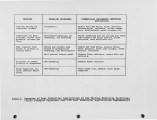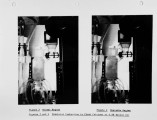| Title |
The Use of Modelling Techniques in the Reduction of Emissions and Energy Conservation |
| Creator |
Mullinger, P. J.; Broadley, Gary |
| Publisher |
University of Utah |
| Date |
1992 |
| Spatial Coverage |
presented at Cambridge, Massachusetts |
| Abstract |
The use of modelling to study combustion systems dates from the 1940's. Water/bead modelling was used, initially by research laboratories, and later in the 1960's by at least two commercial burner companies. Acid/alkali modelling and zone heat transfer modelling came into the commercial field in the 1980's and more recently computational fluid dynamics (CFO) is making its contribution. This paper reviews the current status of these various modelling techniques and their application to industrial furnaces. A selection of example case histories are reviewed, where these techniques have been used for the reduction of pollutant emissions and energy conservation. The case histories include:- 1. The design of a flash calciner using water/bead, acid/alkali and CFO modelling. 2. The upgrading of kiln combustion systems, to allow a fuel change from oil to gas with minimal efficiency derating using acid/alkali and mathematical zone modelling. 3. The upgrading of furnace firing systems to increase efficiency and minimize the emission of pollutants using water/bead and mathematical zone modelling. |
| Type |
Text |
| Format |
application/pdf |
| Language |
eng |
| Rights |
This material may be protected by copyright. Permission required for use in any form. For further information please contact the American Flame Research Committee. |
| Conversion Specifications |
Original scanned with Canon EOS-1Ds Mark II, 16.7 megapixel digital camera and saved as 400 ppi uncompressed TIFF, 16 bit depth. |
| Scanning Technician |
Cliodhna Davis |
| ARK |
ark:/87278/s6jh3psc |
| Setname |
uu_afrc |
| ID |
12105 |
| Reference URL |
https://collections.lib.utah.edu/ark:/87278/s6jh3psc |

































